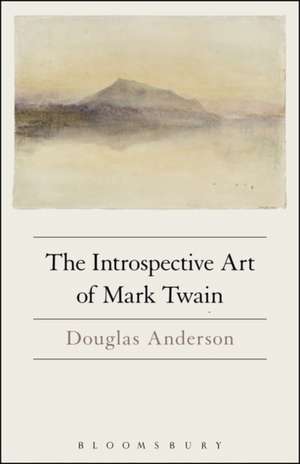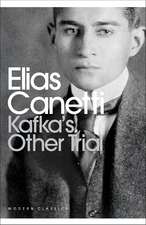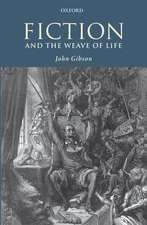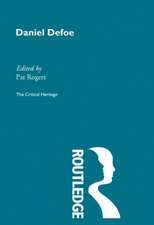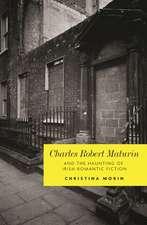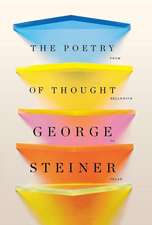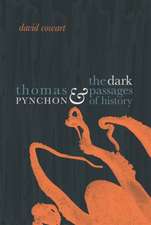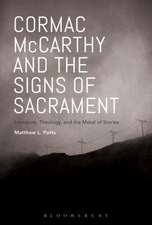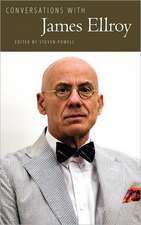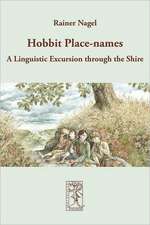The Introspective Art of Mark Twain
Autor Prof. Douglas Andersonen Limba Engleză Hardback – 19 apr 2017
| Toate formatele și edițiile | Preț | Express |
|---|---|---|
| Paperback (1) | 192.73 lei 3-5 săpt. | |
| Bloomsbury Publishing – 19 apr 2017 | 192.73 lei 3-5 săpt. | |
| Hardback (1) | 832.65 lei 6-8 săpt. | |
| Bloomsbury Publishing – 19 apr 2017 | 832.65 lei 6-8 săpt. |
Preț: 832.65 lei
Preț vechi: 1066.86 lei
-22% Nou
Puncte Express: 1249
Preț estimativ în valută:
159.33€ • 166.69$ • 132.35£
159.33€ • 166.69$ • 132.35£
Carte tipărită la comandă
Livrare economică 02-16 aprilie
Preluare comenzi: 021 569.72.76
Specificații
ISBN-13: 9781501329555
ISBN-10: 1501329553
Pagini: 296
Ilustrații: 3 colour / 5 b/w illustrations
Dimensiuni: 140 x 216 x 28 mm
Greutate: 0.54 kg
Editura: Bloomsbury Publishing
Colecția Bloomsbury Academic
Locul publicării:New York, United States
ISBN-10: 1501329553
Pagini: 296
Ilustrații: 3 colour / 5 b/w illustrations
Dimensiuni: 140 x 216 x 28 mm
Greutate: 0.54 kg
Editura: Bloomsbury Publishing
Colecția Bloomsbury Academic
Locul publicării:New York, United States
Caracteristici
Bold new reading of the life and career of one of the most beloved, widely studied, and significant of American writers
Notă biografică
Douglas Anderson is the Sterling-Goodman Professor of English at University of Georgia, USA. His previous books include A House Undivided: Domesticity and Community in American Literature (1990), The Radical Enlightenments of Benjamin Franklin (1997), William Bradford's Books: Of Plimmoth Plantation and the Printed Word (2003), Pictures of Ascent in the Fiction of Edgar Allan Poe (2009), and The Unfinished Life of Benjamin Franklin (2012).
Cuprins
List of IllustrationsPrefaceList of AbbreviationsIntroduction: Thought Experiments 1. Inside Excursions 2. Interest 3. Attention 4. Shadings Conclusion: Greatnesses in the Brain Notes Index
Recenzii
Anderson's study of the primary texts is thorough and wide-ranging, providing a sense of the intense mental spaces layered beneath so much of Twain's writing. The Introspective Art of Mark Twain will be of use to critics to understand the psychology of Twain and his creative process as it developed through his career.
Douglas Anderson's new book is the best we have on Mark Twain's lifelong interest in consciousness and the motions of the mind. With graceful, thorough attention to the historical record, Anderson situates him convincingly in the era of William James and the birth of modern psychology. More important, Anderson shows us new and deeper connections between this powerful interest, this fascination with the inner life, and Mark Twain's narrative strategies, from early sketches all the way to the final works.
This book offers a radical rereading and reassessment of a major American writer. Arguing that in Mark Twain's end is his beginning, Douglas Anderson shows how one of the writer's last books, published anonymously towards the end of his life, helps us to understand his artistic aims and achievement. Fresh light is shed on the familiar, as Anderson examines Twain's entire career with close reference to the idea that a writer often seen as a celebrant of the material, the outer world, was in fact preoccupied with the inner and, in particular with the tortuous, labyrinthine nature of the human consciousness. The Introspective Art of Mark Twain represents a major intervention in Twain studies and, in my opinion, is likely to become required reading for anyone interested in and working on this author. Energetically argued, intellectually sophisticated and deeply informed, it also performs the rare feat of shifting the critical paradigms and making us realise that there is much more to Mark Twain and his work than we had ever imagined.
Placing Mark Twain's 'What Is Man?' at the beginning of his perceptive reading of the author's oeuvre, Professor Anderson makes the dialogue between Old Man and Young Man immediately compelling. The 1906 text becomes relevant to this twenty-first century. We appreciate again what Anderson calls Twain's 'argumentative play;' we see, perhaps for the first time, how important are the autobiographical excerpts in the North American Review. An accurate, erudite and above all sympathetic study.
Douglas Anderson's new book is the best we have on Mark Twain's lifelong interest in consciousness and the motions of the mind. With graceful, thorough attention to the historical record, Anderson situates him convincingly in the era of William James and the birth of modern psychology. More important, Anderson shows us new and deeper connections between this powerful interest, this fascination with the inner life, and Mark Twain's narrative strategies, from early sketches all the way to the final works.
This book offers a radical rereading and reassessment of a major American writer. Arguing that in Mark Twain's end is his beginning, Douglas Anderson shows how one of the writer's last books, published anonymously towards the end of his life, helps us to understand his artistic aims and achievement. Fresh light is shed on the familiar, as Anderson examines Twain's entire career with close reference to the idea that a writer often seen as a celebrant of the material, the outer world, was in fact preoccupied with the inner and, in particular with the tortuous, labyrinthine nature of the human consciousness. The Introspective Art of Mark Twain represents a major intervention in Twain studies and, in my opinion, is likely to become required reading for anyone interested in and working on this author. Energetically argued, intellectually sophisticated and deeply informed, it also performs the rare feat of shifting the critical paradigms and making us realise that there is much more to Mark Twain and his work than we had ever imagined.
Placing Mark Twain's 'What Is Man?' at the beginning of his perceptive reading of the author's oeuvre, Professor Anderson makes the dialogue between Old Man and Young Man immediately compelling. The 1906 text becomes relevant to this twenty-first century. We appreciate again what Anderson calls Twain's 'argumentative play;' we see, perhaps for the first time, how important are the autobiographical excerpts in the North American Review. An accurate, erudite and above all sympathetic study.
